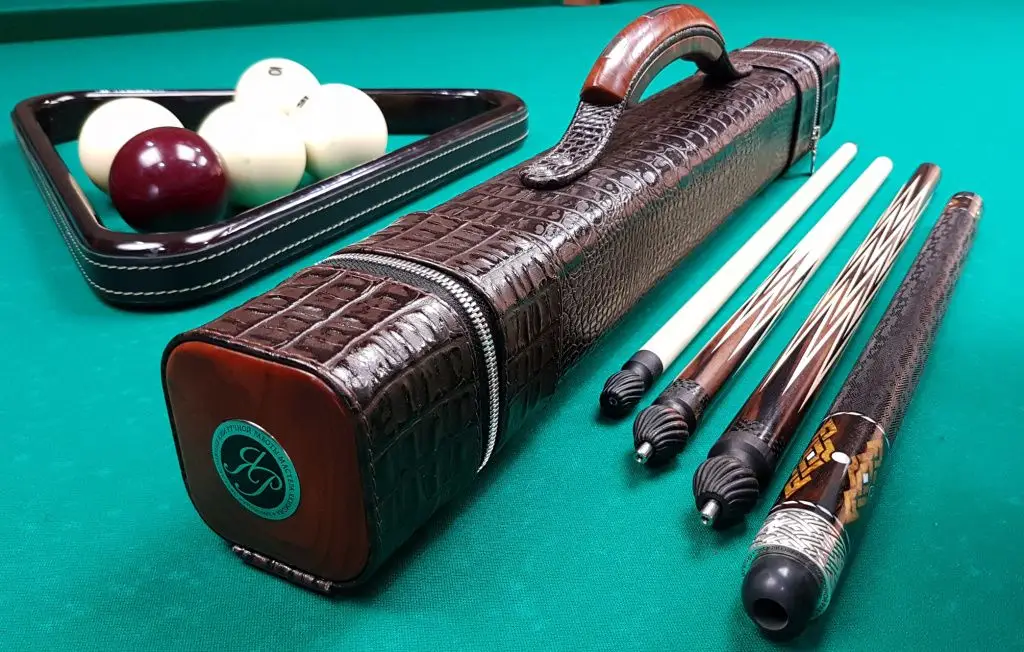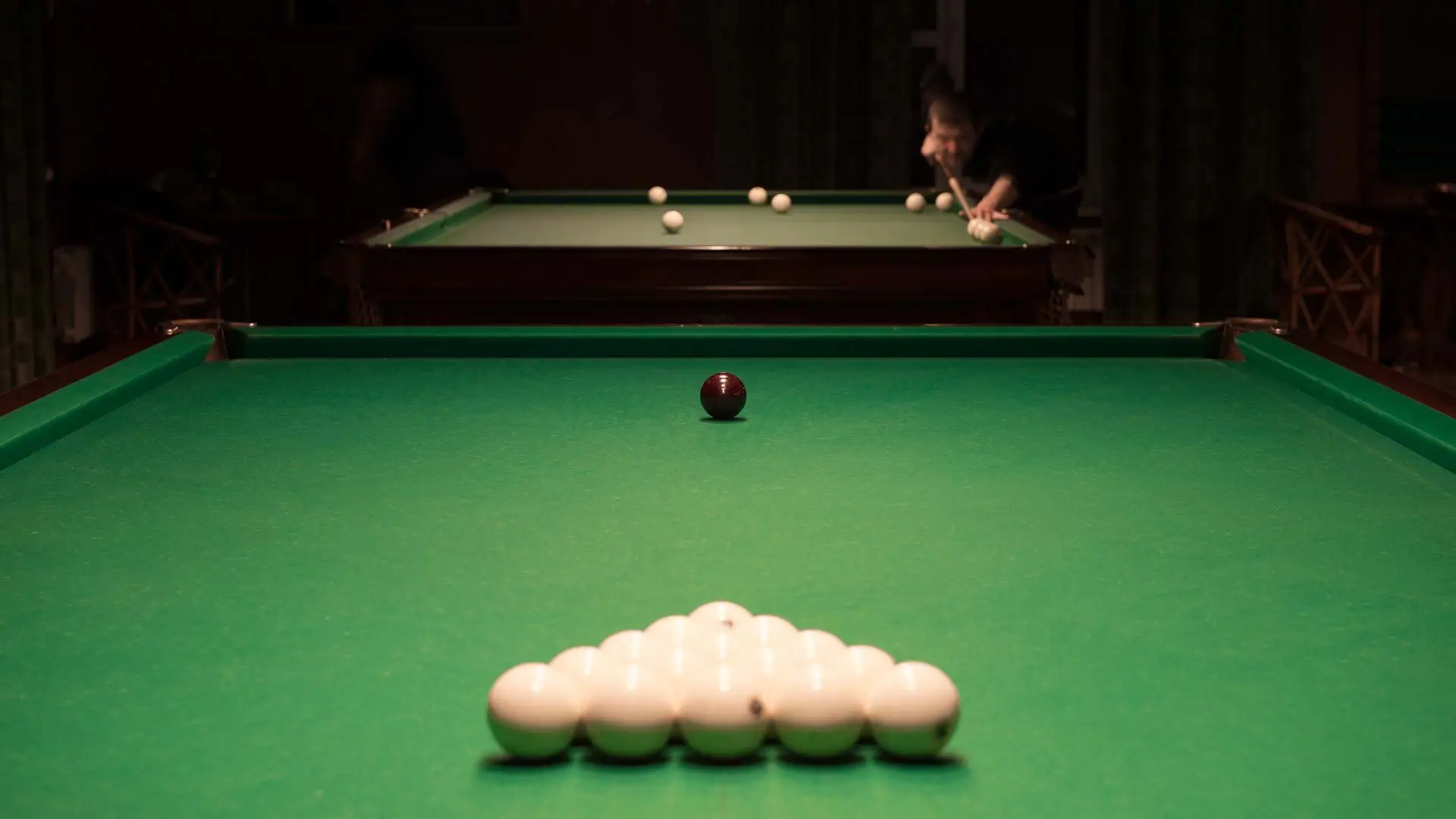In the unique billiard game without pockets, precision and strategy are important. If you want to understand how to play carom, how the balls move on the table, and what makes the process so fascinating, this article is for you. We will go over the rules and specifics to help you master this captivating discipline. Get ready to discover a world where every shot matters!
What is carom: essence and philosophy of the game, how to play
The discipline represents a special form of billiards, distinguished by the absence of pockets and relying on interactions between balls and cushions. When answering the question of what carom is, the exceptional complexity always comes first. A player uses a cue to hit both other balls in one shot. It is this cascade that forms a carom.

The spectacular nature of the game is not in strength but in the elegance of the trajectory. Visually, it’s pure geometry, in reality, it’s the subtle mathematics of impulses, rotation, and angle calculation.
History of carom: from Louis XI to Peter I
The first mention of carom appears at the court of Louis XI. French billiards quickly gained popularity among the aristocracy, evolving as an intellectual pastime. The game reached Russia through European diplomats at the court of Peter I, acquiring the status of a diplomatic tradition. As the rules evolved, they adapted to modern ideas of sports: markings appeared, table dimensions were standardized, and competition formats were established.
Equipment and inventory: impeccable precision in details
A full game requires strict adherence to standards. The table is a rectangular surface without pockets, 2.84 m long and 1.42 m wide. The table covering material is a dense, fast-rolling cloth.
The cue is an elongated stick made of hard wood or composites, with a leather tip. The balls are three in color: cue ball (white), opponent’s ball (usually yellow), and object ball (red). Their diameter is 61.5 mm, weight around 210 grams.
Rules of the game: how to play carom
The question of how to play carom boils down to a sequential goal: touching both opponent’s balls within one shot. It’s important not just to touch them but to do it skillfully, without accidental rebounds.
Key points:
- The shot is made with the cue ball.
- Only the contact of two balls is counted.
- Points are scored for each successful carom execution.
- The winner is the first to reach the set number of points (usually 30 or 50).
Striking technique and trajectory control: how to play carom
Every movement in carom requires calculation. The cue must follow a straight line of impact, without vibration or unnecessary movements. The role is not in strength but in the angle of attack and point of contact. The body position affects the stability of the shot. The player distributes the center of gravity over the supporting leg, the elbow forms a right angle, the gaze fixes not on the cue but on the point of contact. Working with the cushions remains a crucial aspect: rebounds here are a norm, not a coincidence.
Varieties of carom: more interesting than it seems
Despite its strictness, carom includes several formats:
- Classic three-ball — the basic version.
- With zone restrictions — players cannot repeat combinations in one area of the table.
- Free — allows shots without mandatory cushion contact.
- Penalty carom — a duel of alternate shots from one position, popular in training.
Artistic carom: spectacle in its pure form
Among the many varieties of carom, artistic carom occupies a special niche. Unlike the classic format, this type involves pre-defined figures — trajectories that must be accurately reproduced. Here, the demonstration of skill is more important than the number of points: shots with maximum spins, jumps, multi-cushion combinations across several cushions.
Tactics and strategies: how to play carom correctly
The answer to how to play carom cannot be limited to a mechanical shot. Without calculation, defeat is inevitable. Experienced players calculate trajectories up to three to four rebounds ahead. Positional preparation plays a crucial role: after the shot, the ball should not just touch the target but remain in a favorable position.
List of skills and elements necessary for success:
- Spin shot: allows adjusting the trajectory by cushion contact.
- Short cushion rebound: used at short distances.
- “Long-short-long” series: a classic three-cushion scheme.
- Positioning: leaving balls in a favorable zone for the next shot.
- Deceptive rebound: creates the effect of a non-standard trajectory.
- Playing off the cushion: used in artistic carom.
- Soft touch: controls ball movement with minimal impulse.
- Bank shot: used within artistic carom.
- Stop shot: allows shifting the initiative in defense.
- Counterattack with delay: creates a delayed movement effect.
Carom in Russia: how a little-known discipline became popular
For a long time, carom remained a little-known discipline in Russia, overshadowed in popularity by pocket billiards. However, this type of game has deep roots in the country. Already in the early 18th century, Peter I showed a lively interest in billiards, ordering the first tables without pockets upon his return from Holland and personally organizing training matches at the court. Under his patronage, carom spread among the nobility as a sign of refined taste and European education. The game was perceived as an intellectual pastime requiring calculation, composure, and visual thinking.
Later, interest in the French format waned. The mass audience preferred Russian and American pocket billiards. Carom survived in individual clubs and private collections, where enthusiasts continued the tradition of a “clean table.” By the beginning of the 21st century, a turning point emerged. Specialized billiard academies in Moscow, St. Petersburg, Yekaterinburg, and Kazan included carom in their educational programs. The Sports Billiards Federation began organizing the first tournaments in this discipline, attracting international-level judges and coaches.
Today, Russian clubs purchase professional pocketless tables, install cameras above the playing areas for trajectory analysis, and introduce the artistic carom format as a spectacular alternative to the classic. In many halls, there are separate days for teaching children and juniors. Coaches teach not only shots but also correct body positioning, visual counting, and positional thinking.
Regional leagues hold regular matches, form rankings, and teach newcomers basic rules. The key element of the revival was combining historical value with systematic modern training. In major cities, the demand for carom is growing, including among women and the older generation — thanks to the leisurely pace, high aesthetics, and low risk of injury.

Development is complemented by private tournaments, master classes from foreign players, online courses, and broadcasts. The Russian audience is beginning to perceive carom not as an archaic curiosity but as a distinct and intellectually rich discipline.
Conclusion
Each game of carom is not just a competition. It is an intellectual game where the calculating, not the strongest, emerges victorious. Clear rules on how to play carom, high technical requirements, and the visual beauty of trajectories make this format unique among all types of billiards.
 en
en  ru
ru  de
de  ar
ar  es
es  nl
nl  hi
hi  fr
fr  it
it  pt
pt  el
el 



